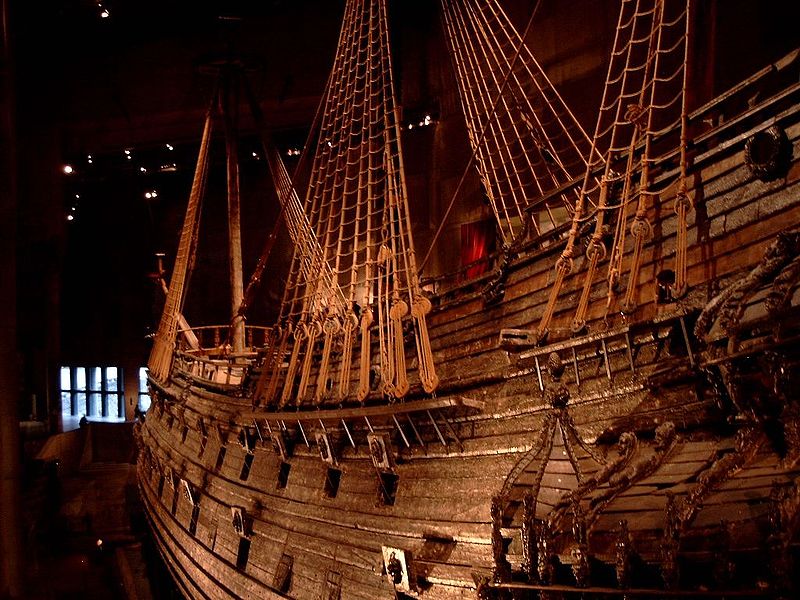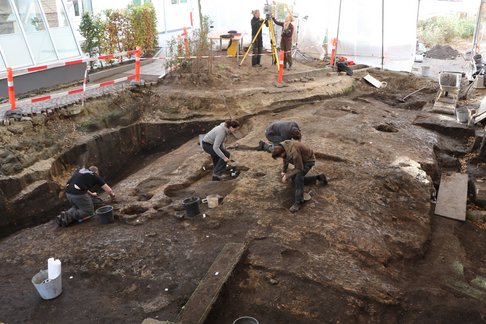The field of archaeology in the Nordics
Prominent Nordic archaeologists have included C J Thomsen, who proposed the first the chronological classification of artefacts, and Lennart von Post, who pioneered useful dating methods. Archaeology as a discipline in the Nordics has changed dramatically over time, from traditional archaeology in 19th century, to more emphasis on scientific methods in the 1960s, to a greater emphasis on the subjectivity of archaeological interpretation in the 1980s. Latterly, as elsewhere, science and technology have paved the wave for more innovative methods.

Archaeology as a discipline has changed dramatically over time, mainly as a result of new research traditions. No school of thought has entirely eradicated the others, and to some extent they continue to complement each other. Early publications, especially from the end of the nineteenth century onwards, formed part of the traditional or culture-historical archaeology, which classified past societies into cultural groups according to their material culture.
The Swede Oscar Montelius was one of the most prominent figures at this time, laying the foundations for the study of typology of artefacts (the arrangement of artefacts into chronological or developmental sequence). Before this time, in 1836, another major breakthrough had been made by the Dane C J Thomsen, who divided artefacts into groups deriving from the Stone Age, Bronze Age and Iron Age, respectively. This classification was conceptually significant as this was the first time that the notion of a chronological categorisation of artefacts was presented.
High standing of ‘New Archeology’ in the Nordics, from 1960s
Traditional archaeology was replaced from the end of the 1960s by the emergence of processual archaeology or ‘New Archaeology’. This school was highly influenced by scientific methods, and also involved the use of many other disciplines. It gained a particularly high standing in the Nordic countries in comparison to the rest of Europe, with centres at the universities of Göteborg (Gothenburg) and Bergen and with strong links to the journal Norwegian Archaeological Review, which was founded in 1968. In the Nordic region, systemic, geographic, ecological and ethno-archaeological aspects in particular were developed, as evidenced in the works of e.g. the Dane Jørgen Jensen, the Swede Stig Welinder and the Dane Kristian Kristiansen. To some extent, this constituted a move away from the original processualism, which had been led by the American Lewis Binford and Colin Renfrew and David Clarke in the UK, as less emphasis was placed on theoretical reasoning.

PICTURE: The Northern Emporium Project explores the earliest urban network in Scandinavia through excavation in the emporium Ribe, Denmark, which is done through a High-Definition archaeology that clarifies the changes to the site and its connections, as well as the possible dynamics behind these. The photo shows the team uncovering the clay floor of a substantial house from early 800's. Photo: The Museum of Southwest Jutland and the Northern Emporium Project.
The shift towards interpretive archaeology in the Nordics, from late 1970s
The next shift began in the late 1970s and early 1980s, with postprocessual or interpretive archaeology, a theoretical movement that emphasised the subjectivity of archaeological interpretation. This diverse movement, which originated in the UK with scholars such as Ian Hodder and Christopher Tilley, was part of postmodernism and was influenced by various theoretical approaches, e.g. feminism, hermeneutics and neo-Marxism. Interpretive archaeology paved the way for new methodologies and interpretations, which steered away from large generalisations, but it has at times been accused of promoting relativism.
From the 1980s this approach began to be adopted with vigilant optimism in Norway and Sweden, and more gradually in Denmark and especially Finland. At this time, the old and new ideas were often seen as complementary, rather than oppositional, as was the case in the UK.
More hardline debates took place in the 1990s when postprocessual archaeology had gained a footing and the journal Current Swedish Archaeology was established to promote a more interpretive archaeology. The approach has thrived in many areas and its impact has been seen in museums and universities into the 2000s. The postprocessual connection between archaeology and politics is evidenced in discussions on the role of the Sámi peoples in the history of the Nordic region. Archaeology as a discipline is continuously developing and changing, and new approaches are emerging, reevaluating the relationship between humans and the surrounding world, as well as that between the humanities and the natural sciences.
Science, technology and infrastructure pave the way for archaeological fieldwork and interpretation
Until the Second World War most archaeological excavations in the Nordic countries were carried out for research purposes. From the 1950s, infrastructure development increased with large-scale construction of roads, housing and hydroelectric power stations. Thorough field surveys now became a matter of priority and the number of excavations multiplied, as did archaeological material and literature, which dramatically changed archaeologists’ views of the past. In Iceland, a similar expansion occurred in the 1990s after the introduction of stricter heritage laws.
The major increase in fieldwork also led to great improvements in excavation, mapping and recording methods. From the 1990s information technology began to make its impact and drastically changed many aspects of archaeological work. Institutions in the Nordic countries have been at the forefront of the development of new digital methods, which are increasingly employed in on-site recording of excavations, mapping, landscape reconstruction, database compilation, analyses and also web-based university teaching. On-line site and monument records have made archaeological material easily available for researchers and the general public.

PICTURE: 3D scans are used as a means of new technology within archaeological fieldwork e.g. to visualise the floor horisons from Viking homes. This is a 3D scan from a Northern Emporium's study in Ribe, Denmark's oldest town. Graphic: Sarah Croix, Northern Emporium.
Another significant twentieth-century development was the adaptation of scientific methods for archaeology, above all through environmental sciences, physics and chemistry. These methods provided new insights into the lives of past peoples and also the means of dating (e.g. radiocarbon and dendrochronology). Palynology, used for dating and for revealing information about the climate and vegetation of past environments, was pioneered by the Swede Lennart von Post (1884-1951). Another area that has undergone major changes is marine archaeology, first practised in the mid-nineteenth century. Developments in this field have been led by new diving techniques, and since the 1960s, underwater heritage management. Major finds include the following, all of which are now on display in museums:
- the 17th-century Vasa ship,
- the 4th-century Nydam boat and
- the five 11th-century Skuldelev ships.
Across the Nordic region ancient sites and monuments are protected by legislation that gives state organisations control over new developments in areas with registered ancient sites. In Norway and Denmark only national and regional museums are allowed to excavate, while in the other countries private companies have, to varying extents, been allowed to enter the market.
Further reading:
- Björnar Olsen, Från ting till text. Teoretiska perspektiv i arkeologisk forskning [From things to text - Theoretical perspectives in archaeological research] (Lund: Studentlitteratur, 2003).
- Göran Burenhult, ed, Arkeologi i Norden [Archaeology in the North] (Stockholm: Natur och Kultur Akademisk, 1999).
- Oliver J. T. Harris, Craig Cipolla, Archaeological Theory in the New Millennium. Introducing Current Perspectives (London: Imprint Routledge, 2017).